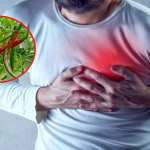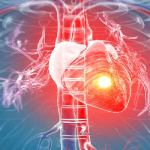A panic attack and a heart attack have similar symptoms, such as a strong pain in the chest, sweating, a prickly feeling, uneven breathing, and nausea. The fact that a heart attack can induce panic only makes it more likely that people confuse the two. But despite the seeming similarity, you can learn to distinguish between them effectively.
We at Bright Side are certain that if either you or a member of your family experiences panic attacks, it’s vitally important for you to understand the differences between them and something even more serious. This article will help you.
How to recognize a heart attack
- People describe the pain during a heart attack as constricting.
- As a rule, the pain appears in the center of the chest and can move downward along the left armand along the back.
- The pain can also spread to the neck, teeth, and jaw area.
- The intensity of the pain can change.
- The pain lasts for more than five minutes and doesn’t affect a person’s breathing.
- The prickly feeling is generally restricted in most cases to the left arm. This is often accompanied by a cold, sticky sweat, feelings of nausea, and even throwing up.
- At the height of a heart attack, people experience a fear which is concentrated exclusively on the pain in their chest, and they become afraid they might die.
As a rule, in addition to the above, the individual often experiences quickened breathing, apart from cases when the heart attack provokes a panic attack.
If you have these symptoms for more than 5 minutes, call an ambulance. If you can’t, ask someone to take you to the nearest hospital as soon as possible.
How to recognize a panic attack
Despite the widespread misconception, a panic attack can occur in the most ordinary of circumstances.
- The symptoms of a panic attack usually reach their peak after 10 minutes.
- The pain is concentrated in the region of the chest and has an undulating character to it: it rises then falls.
- The prickly feeling and numbness that can occur during a panic attack are not restricted to the left arm but can also appear in the right arm, legs, and fingers.
- During panic attacks, people experience irrational fears, such as the fear they’re suffocating or going insane.
If you can’t work out whether you’re experiencing a panic attack or a heart attack, see a doctor immediately. Waiting is not the best solution in either case. If it turns out that you’re having a heart attack, you could die if you don’t receive medical help. A lack of medical support during a panic attack can make the symptoms worse and lead to the attacks occurring more often. Timely examination and care from a specialist could improve the quality of your life as well as your life expectancy




